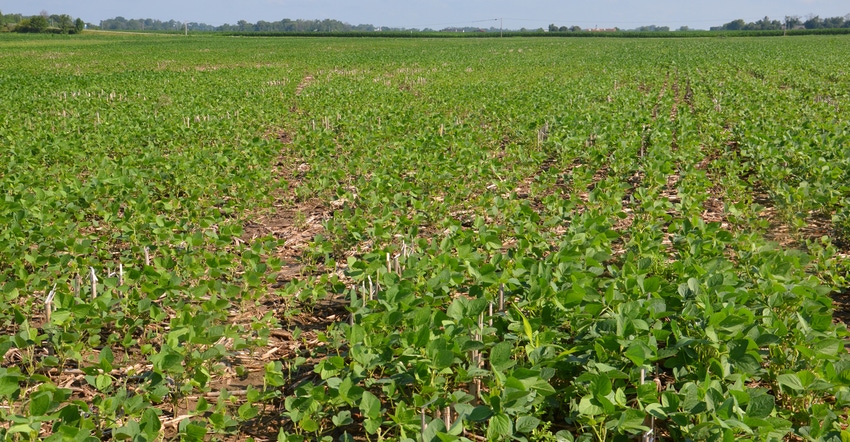
Shaun Casteel, the Purdue University Extension soybean specialist, has shown yield and profit increases from applying sulfur in some locations over the past few years. Other Purdue Extension agronomists have also shown benefits in some on-farm field trials. All would acknowledge, however, that they don’t see an economic benefit in every field or at every rate of every product they try.
Maybe that’s why a central Indiana farmer who grows soybeans on average to above-average soils expressed doubts about whether he was seeing the benefits of sulfur that Casteel and others have talked about recently. He applies some sulfur for soybeans, but he isn’t convinced he’s getting much return on his investment.
Related: Replanting or spotting in: When should you pull the trigger?
Steve Gauck, a regional agronomy manager for Beck’s, sponsor of Soybean Watch ’21, says that Beck’s looked at the sulfur response on soybeans at five different locations in its Practical Farm Research studies in 2020.
Based on one year’s tests, there is some indication that sulfur may help, but there is a difference in how much response you may see to various products and rates, he says. It hasn’t been tried in the Soybean Watch field in the past. If you’re going to try sulfur on your fields in the future, he suggests testing it on a small acreage at first and including check strips without sulfur so you can make comparisons.
Early results
The Beck’s PFR team repeated the same study at locations in Indiana, central Illinois, Ohio, Kentucky and Minnesota in 2020, and then averaged the results. Soybeans without additional sulfur averaged 70.6 bushels per acre. Yields for AMS granular at 100 pounds per acre, AMS granular at 125 pounds per acre, Sulfurmax at 100 pounds per acre and Sulfurmax at 125 pounds per acre were 72.8, 71.7, 71 and 70.8 bushels per acre, respectively. Only the AMS granular at 100 pounds per acre showed a positive return on investment, and it was only $3.08 per acre. The other three treatments showed negative returns between $11 and $16 per acre.
That was pricing soybeans at $9.13 per bushel. At $12 per bushel, the ROI for 100 pounds of AMS would be about $10 per acre, but the other three would still be negative. And that assumes the price of fertilizer has not increased since 2020 either.
Gauck notes that if you’re looking for responses to sulfur, because it’s mobile, you might expect to see a response in years with more rainfall because more might be lost, or on soils with lower organic matter than the soils where these PFR plots were located. Sulfur mineralizes from organic matter.
To determine if added sulfur made it into the plants, tissue samples were pulled at the R3 to R4 stage at each location. At every location except Ohio, sulfur percentages were higher within the plant for every treatment vs. the no-sulfur control, but the differences were relatively small. In Ohio, sulfur content was lower for two treatments than the control, but only by a minute amount.
“Sulfur for soybeans is something we need to keep watching and evaluating,” Gauck says. “Soybeans need sulfur, and there is less available from the atmosphere today. We still need to determine what is the best product and proper timing for a sulfur application.”
About the Author(s)
You May Also Like




